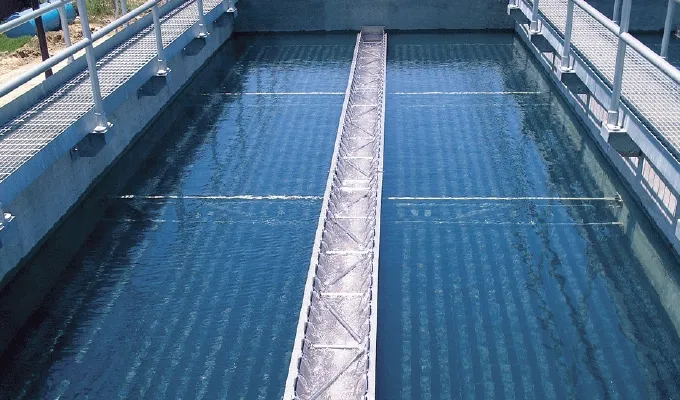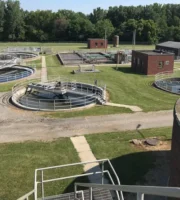What Is Disinfection In Wastewater Treatment

Understanding Disinfection in Wastewater Treatment
Wastewater treatment is an essential process that ensures the safety and health of our water supplies, the environment, and human populations. Within this comprehensive system, disinfection stands out as a critical step aimed at eliminating or deactivating pathogenic microorganisms. This article delves into the intricacies of disinfection in wastewater treatment, exploring its methods, importance, and future trends.
Introduction to Wastewater Treatment
Wastewater treatment is the process of removing contaminants from water released from homes, industries, and other establishments, converting it into an effluent that can be returned to the water cycle. This treatment process is vital for preventing water pollution and protecting ecosystems and human health.
The Stages of Wastewater Treatment
-
- Preliminary Treatment: This involves the removal of large debris and grit that might cause damage or clogs in the plant’s equipment.
-
- Primary Treatment: The wastewater is settled in tanks to remove suspended solids, oils, and greases.
-
- Secondary Treatment: Microbial processes are employed to degrade dissolved and suspended organic material.
-
- Tertiary Treatment: This involves further purification to remove remaining inorganic compounds and pollutants.
-
- Disinfection: The focus of our article, this is the final key step aimed at killing or inactivating pathogenic microorganisms to prevent waterborne diseases.
What Is Disinfection in Wastewater Treatment?
Disinfection in wastewater treatment refers to the elimination of pathogenic microorganisms that can cause diseases in humans and animals. These microorganisms include bacteria, viruses, protozoa, and fungi. Effective disinfection is crucial because it ensures that the treated water is safe for discharge into natural water bodies or for reuse.
Why Is Disinfection Important?
-
- Protection of Public Health: Ensures that pathogens released in treated wastewater do not harm human health.
-
- Environmental Protection: Prevents outbreaks of diseases in aquatic ecosystems, which can impact biodiversity and food chains.
-
- Regulatory Compliance: Meets legal standards for wastewater treatment set by environmental agencies.
-
- Supporting Water Reuse: Ensures that treated wastewater can be safely reused for agricultural, industrial, or recreational purposes.
Methods of Disinfection in Wastewater Treatment
Several disinfection methods are commonly used, each with distinct advantages and disadvantages. The choice of method depends on various factors, including the scale of the treatment plant, cost considerations, and the required level of disinfection.
Chlorination
Chlorination is one of the most traditional and widely used disinfection methods. It involves adding chlorine or chlorine compounds to the wastewater.
-
- Process: Chlorine is introduced to the water as a gas, liquid, or solid (such as sodium hypochlorite). It forms hypochlorous acid (HOCl) in water, which is a potent disinfectant.
-
- Advantages: Highly effective against a broad spectrum of microorganisms, cost-effective, and provides residual disinfection.
-
- Disadvantages: Can form potentially harmful chlorinated by-products like trihalomethanes (THMs) and chloramines, which have raised environmental and health concerns.
-
- Applications: Suitable for large-scale municipal and industrial wastewater treatment plants.
Ultraviolet (UV) Disinfection
UV disinfection uses ultraviolet light to inactivate microorganisms in wastewater.
-
- Process: Wastewater is exposed to UV light at a specific wavelength (typically around 254 nm), which damages the DNA and RNA of microorganisms, rendering them incapable of reproducing.
-
- Advantages: No chemical residues, effective against a wide range of pathogens, and relatively low operational costs.
-
- Disadvantages: Initial setup can be costly, effectiveness can be reduced by turbid water, and no residual disinfection effect.
-
- Applications: Increasingly popular in wastewater treatment facilities especially those concerned with chemical by-products.
Ozone Disinfection
Ozone, a powerful oxidizing agent, is used in some wastewater treatment plants for disinfection.
-
- Process: Ozone gas is bubbled through the wastewater, leading to the breakdown of microorganisms.
-
- Advantages: Effective across a broad spectrum of pathogens, including resistant viruses and protozoa, and produces no harmful residuals if managed properly.
-
- Disadvantages: High operational and maintenance costs, requires on-site ozone generation, and ozone itself is a toxic gas.
-
- Applications: Used in facilities prioritizing high-quality effluents and locations where chlorine use is prohibited.
Advanced Oxidation Processes (AOPs)
AOPs are a group of chemical treatment procedures designed to remove organic and inorganic materials by oxidation.
-
- Process: Combines ozone, hydrogen peroxide, and UV light to generate highly reactive hydroxyl radicals, which attack and break down pollutants.
-
- Advantages: Extremely effective at removing micro-pollutants, pathogens, and recalcitrant compounds.
-
- Disadvantages: High cost and complex operation.
-
- Applications: Used in facilities treating industrial wastewater or those requiring removal of specific contaminants.
Factors Influencing the Choice of Disinfection Method
-
- Type of Wastewater: Industrial vs. municipal wastewater may require different approaches.
-
- Quality of Influent: Physical characteristics like turbidity can impact the effectiveness of certain methods such as UV.
-
- Regulatory Requirements: Standards set by local environmental protection agencies.
-
- Operational Costs: Includes installation, maintenance, and operational expenses.
-
- Environmental Impact: Consideration of by-products and chemical residues.
-
- Scale of Operation: Larger plants may have different economic or logistical considerations compared to smaller ones.
Challenges in Wastewater Disinfection
Even with advanced techniques, wastewater disinfection presents several challenges:
Pathogen Resistance
-
- Some microorganisms develop resistance mechanisms to conventional disinfectants, necessitating the use of more advanced methods like AOPs.
Disinfection By-Products (DBPs)
-
- Chlorination can lead to the formation of DBPs, which need to be managed to prevent secondary environmental contamination.
Energy Consumption
-
- Methods like UV and ozone disinfection require significant energy input, which can impact sustainability goals.
Economic Costs
-
- Advanced methods, while effective, come with high cost implications that may not be feasible for all treatment plants.
Advances and Innovations in Wastewater Disinfection
The field of wastewater disinfection is continuously evolving, with ongoing research aimed at improving efficiency, sustainability, and cost-effectiveness.
Nanotechnology
-
- Nanomaterials, especially those with photocatalytic properties, are being explored for their potential to enhance disinfection processes without harmful residues.
Electrochemical Disinfection
-
- Utilizes electric fields to disrupt microbial cell walls. It is energy-efficient and can be used in combination with other methods to improve efficacy.
Hybrid Systems
-
- Combining different disinfection techniques (e.g., UV and ozone) can offer synergistic effects, leading to more robust pathogen control.
Real-time Monitoring Technologies
-
- Advanced sensors and monitoring systems are being developed to offer real-time pathogen detection and system performance feedback, allowing for better adjustment and control.
Future Directions
The future of disinfection in wastewater treatment is likely to be shaped by increasing regulatory pressure, technological advancements, and greater emphasis on sustainability.
Regulatory Trends
-
- Stricter regulations will push for lower allowable levels of pathogens in treated wastewater, potentially driving innovation in disinfection technologies.
Sustainability Goals
-
- There will be a growing emphasis on reducing the carbon footprint of treatment facilities, promoting zero-waste processes, and minimizing chemical usage.
Integration with Decentralized Systems
-
- As urbanization continues, decentralized treatment systems will become more common, requiring adaptable and highly efficient disinfection solutions.
Role of Artificial Intelligence
-
- The integration of AI to optimize disinfection processes and predict operational needs can lead to more efficient and responsive wastewater treatment systems.
Conclusion
Disinfection is an indispensable component of wastewater treatment, ensuring the protection of public health and the environment. While traditional methods like chlorination remain widespread, evolving challenges and technological innovations have paved the way for advanced techniques. As we move forward, the landscape of wastewater disinfection will be shaped by a combination of regulatory demands, technological innovation, and a commitment to sustainable practices. By understanding and applying these principles, we can ensure a safer, cleaner, and more resilient water future.


